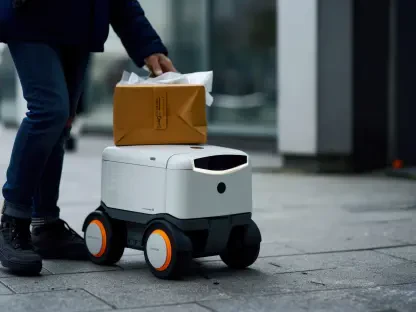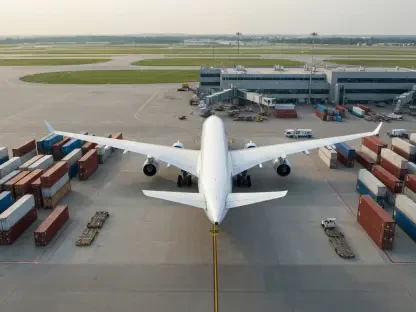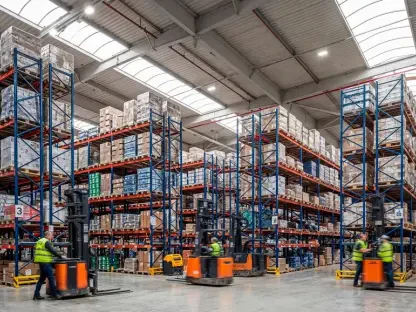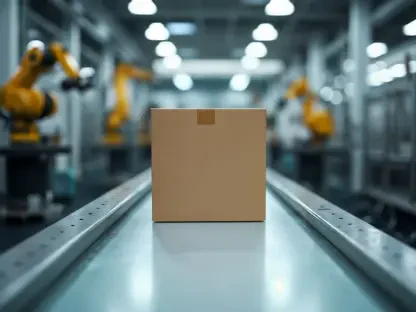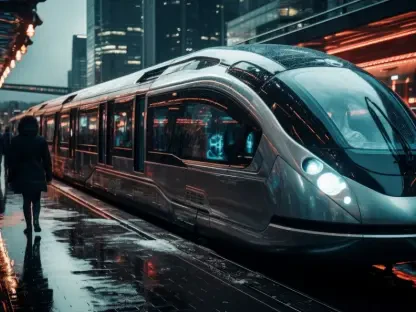Amid ongoing global endeavors to reduce carbon emissions and pursue sustainability, the railway industry is exploring innovative solutions, including transitioning from diesel-electric locomotives to alternative power sources like hydrogen fuel cells and hybrid battery-electric technologies. Two industry giants, CSX and Union Pacific (UP), are leading the charge in this transformative effort. This movement not only underscores the railroad sector’s commitment to environmental stewardship but also highlights advancements in technology aimed at enhancing efficiency while maintaining operational viability. The durability and repurposing of existing train fleet components play a crucial role in ensuring a smoother transition without the need for excessive investment in brand-new equipment. The concept of harnessing hydrogen and battery technologies reflects a forward-thinking approach designed to meet present sustainability objectives and prepare for future challenges, instigating intrigue and posing essential questions about the potential evolution of rail power.
CSX’s Commitment to Hydrogen Conversion
CSX has embarked on an ambitious journey to retrofit traditional diesel-electric locomotives with hydrogen power, aiming to extend the useful life of its fleet while reducing environmental impact. At the Huntington Locomotive Shop in West Virginia, CSX successfully converted three locomotives to hydrogen, with a fourth anticipated for completion by the end of the current year. This innovative project leverages a hydrogen conversion kit to recycle and optimize existing locomotive components, aligning closely with CSX’s sustainability objectives and operational requirements. Daniel Adkins, guiding CSX’s Hydrogen Locomotive Program as Project Coordinator, emphasizes the collaboration and dedication required for the rapid implementation of this technologically advanced initiative. The transformation process incorporates extensive skill and craftsmanship, employing a diverse workforce to uphold progress and meet aggressive timelines. This drive towards hydrogen power marks a shift in conventional methods, showcasing CSX’s proactive strategy to adapt to and embrace greener practices.
The decision to convert locomotives into hydrogen-powered systems stems from the growing necessity to address climate change and reliance on fossil fuels. By investing in innovative solutions, CSX is poised to reduce its carbon footprint significantly, leveraging new technologies while maximizing existing assets. This type of conversion does not only preserve valuable resources but also anticipates and addresses barriers that may arise in the rapid shift from traditional energy sources. The revived locomotives stand as an embodiment of technological advancement paired with genuine environmental commitment. As sustainability becomes a paramount concern across industries, CSX’s hydrogen initiative serves to inspire and pave the way for further exploration of green technologies within the railroad domain, showcasing the significant role that transportation plays in fighting ecological challenges.
Union Pacific’s Hybrid Battery-Electric Progress
While CSX focuses on hydrogen, Union Pacific (UP) has adopted an alternative path, concentrating on the development of hybrid battery-electric locomotives in collaboration with ZTR. At the Jenks Locomotive Shop in North Little Rock, Arkansas, UP tested its first hybrid model designed to consume less fuel by recharging batteries during diesel engine operation. This “mother-slug” configuration promises impressive efficiency in yard operations, aiming to reduce fuel use by up to 80%. The strategic partnership endeavors to merge efficiency with performance, delivering locomotives capable of meeting demanding yard tasks with enhanced pull and brake power fueled by technology advancements.
UP’s initiative aligns closely with long-term goals focusing on technological adaptation and minimizing environmental impact. Testing processes are expected to conclude in the forthcoming years, setting the groundwork for operational application and broader fleet integration. These hybrid locomotives stand as testimonies to UP’s commitment to sustainable practices and characterize a pivotal shift toward alternative power sources amidst evolving industry standards. Harnessing battery-electric capabilities, UP presents an emblematic success story of adapting tried-and-tested engineering principles to form innovative solutions that fulfill modern environmental and efficacy demands.
Both CSX and UP demonstrate a noteworthy alignment with global sustainability goals, taking diverse approaches to revolutionize locomotive power dynamics. Their compelling narratives showcase how the railroad industry is undergoing a fundamental transformation, readying itself for future technological advancements without compromising efficiency or performance. These initiatives contribute to broader organizational missions that promise both immediate environmental benefits and long-term viability, enhancing each company’s position as leaders in sustainable transport innovation.
The Road Ahead for Hydrogen and Hybrid Technologies
As the world intensifies its efforts to cut carbon emissions and focus on sustainability, the railway industry seeks innovative solutions, such as moving from diesel-electric locomotives to using alternative power sources like hydrogen fuel cells and hybrid battery-electric systems. Leading the push are major players like CSX and Union Pacific (UP), underscoring the rail sector’s commitment to environmental stewardship. This shift highlights technological advancements aimed at boosting efficiency while remaining operationally sound. The ability to reuse and adapt existing train components is vital for a seamless transition, avoiding significant investment in entirely new equipment. Embracing hydrogen and battery technologies reveals a forward-looking strategy set to achieve current sustainability goals and address future hurdles, prompting curiosity and raising key questions about how rail power might evolve. This innovative approach not only assures current needs are met but prepares the industry for challenges ahead.



